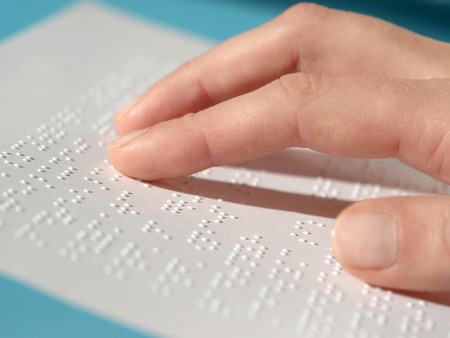In the digital era of 2025, Braille learning remains a cornerstone for enhancing independence and confidence among individuals with low vision. This article explores a beginner’s guide to learning Braille, common challenges, and how mastering this tactile writing system can transform lives.
What is Braille and Its Importance?

Braille is a tactile writing system developed by Louis Braille in the 19th century, consisting of raised dots arranged in cells of up to six dots, with each cell representing a letter, number, punctuation mark, or even a whole word. For people with low vision, defined as visual impairment not fully correctable with glasses or contacts, Braille provides a reliable method to access information independently, especially as their vision may deteriorate over time. According to the World Health Organization, at least 2.2 billion people globally have vision impairment, many of whom could benefit from Braille (NCBI Low Vision Aids).
The importance of Braille lies in its ability to foster independence in reading and writing, crucial for education, employment, and daily tasks. Research suggests that Braille literacy is linked to higher employment rates, with studies indicating that over 90% of employed blind individuals are Braille readers (American Foundation for the Blind, 2019).
Braille Learning Tips for Beginners
Starting to learn Braille can seem daunting, but with the right approach and resources, it becomes manageable and rewarding. Here are essential tips for beginners:
- Enroll in a Structured Course: Organizations like the Royal National Institute of Blind People (RNIB) offer comprehensive Braille courses, both online and in-person (RNIB Learning Braille). These courses provide structured learning paths, often including tactile exercises and assessments.
- Utilize Online Resources: Websites such as Braille Academy offer free online training, allowing learners to study at their own pace (Braille Academy). Other resources include Paths to Literacy, which shares teaching tips and free materials (Paths to Literacy Tips).
- Practice Regularly: Consistency is key. Dedicate time each day to practice reading and writing Braille to build muscle memory and tactile sensitivity. Daily practice, even for 15 minutes, can significantly accelerate learning.
- Start with Uncontracted Braille: Begin with the basic alphabet and numbers before progressing to contracted Braille, which uses shortcuts for common words and letter combinations. Uncontracted Braille, or Grade 1, is simpler for beginners, focusing on one-to-one correspondence between dots and characters.
- Engage Both Hands: Using both hands to read Braille can increase reading speed and efficiency, as it allows for simultaneous processing of multiple cells. This technique is particularly useful for longer texts.
- Incorporate Tactile Exercises: Activities like touching different textures, such as sandpaper, fabric, or even fruits like bananas, can help develop the sensitivity needed to distinguish between Braille dots. Perkins School for the Blind suggests using household items for tactile practice (Perkins Braille Learning).
- Leverage Technology: Interactive apps and software can enhance the learning experience. For example, the Visual Brailler App for iPad allows users to practice reading and writing Braille on a touchscreen, providing immediate feedback (Perkins Braille Learning). Other tools include Braille Tutor apps for smartphones, which offer games and quizzes.
Common Challenges in Learning Braille and How to Overcome Them
 While learning Braille is highly beneficial, it comes with its set of challenges. Here are some common obstacles and strategies to overcome them:
While learning Braille is highly beneficial, it comes with its set of challenges. Here are some common obstacles and strategies to overcome them:
- Developing Tactile Sensitivity: Beginners may find it difficult to feel the differences between dots, especially if they lack prior tactile experience. To improve, practice touching various textures like sandpaper, velvet, or even everyday objects like coins. Paths to Literacy suggests tactile games, such as using dice with raised dots for letter recognition (Paths to Literacy Tips).
- Memorizing the Braille Code: Remembering the dot combinations for letters, numbers, and contractions can be challenging. Use mnemonic devices, such as associating the letter “A” (dot 1) with the number “1,” or create flashcards. Starting with uncontracted Braille can make memorization easier, as it focuses on basic cells before introducing shortcuts.
- Cost of Tools: Braille writers, such as slate and stylus, and software like Duxbury Braille Translator, can be expensive. To mitigate this, look for free resources or borrow equipment from libraries or organizations. WonderBaby offers tips on using free demo versions of software like Duxbury (WonderBaby Teach Yourself Braille).
- Time Commitment: Learning Braille requires patience and time, which can be daunting for busy individuals. Set small, achievable goals, such as mastering a few letters each week, to stay motivated. Regular, short practice sessions are more effective than infrequent, long ones.
- Maintaining Interest: The learning process might seem tedious, especially for children or adults with other commitments. Incorporate fun activities like Braille games or songs to keep engagement high. For example, the Braille Rap Song, available on Paths to Literacy, uses music to teach Braille letters (Paths to Literacy Braille Rap Song).
How Braille Enhances Independence and Confidence
Mastering Braille opens up a world of possibilities for individuals with low vision, significantly boosting their independence and confidence in various aspects of life.
Independence in Daily Tasks
- Reading: From books to restaurant menus, Braille allows independent access to written information, reducing reliance on sighted assistance. This is particularly important for tasks like reading medication labels or grocery lists.
- Labeling: Labeling household items with Braille tags, such as marking spice jars or appliance buttons, helps in identifying objects without help. This enhances daily living and reduces frustration.
- Navigation: Braille signs in public places, like elevators and restrooms, enable independent movement and orientation, fostering a sense of autonomy in unfamiliar environments.
Educational and Employment Opportunities
- Academic Success: Braille literacy is crucial for students to keep pace with their sighted peers. It allows them to take notes, read textbooks, and complete assignments independently, ensuring equal access to education. Research from Blind Learning Zone highlights Braille’s role in academic achievement (Blind Learning Zone Importance).
- Workplace Integration: In the professional world, Braille readers can access documents, emails, and other work-related materials, leading to better job performance and career advancement. Studies suggest that Braille literacy is linked to higher employment rates, with over 90% of employed blind individuals being Braille readers (American Foundation for the Blind, 2019).
Braille and Technology
In the modern era, technology has made Braille more accessible than ever. Refreshable Braille displays connect to computers and mobile devices, converting digital text into Braille in real-time. This allows users to read emails, browse the web, and even code using Braille. Devices like the Orbit Reader 20 or the Focus 40 Blue are popular choices that combine portability with functionality. By integrating Braille with technology, individuals with low vision can stay connected and informed, further enhancing their independence.
Additionally, there are apps and software that teach Braille or provide Braille translation services, making learning and using Braille more convenient. For instance, the Braille Tutor app helps users practice reading and writing Braille on their smartphones, offering interactive exercises and feedback.
Personal Stories
- Juliette’s Journey: Juliette, who has low vision, found learning Braille challenging but ultimately rewarding. She encourages others by saying, “Anyone thinking about learning Braille will hear that it’s hard. It is, but I think it’s worth giving it a go because it’s a really useful skill and you might find that you really enjoy it!” (RSBC Benefits of Braille).
- Brian Kelley’s Experience: Brian Kelley, a student with low vision, transitioned from using large print to Braille. Initially, he struggled with reading large print due to eye strain, but after learning Braille, he found he could read for longer periods without discomfort. This shift not only improved his academic performance but also boosted his confidence in managing his studies independently (NFB Teacher’s Experience).
Emotional Benefits
Learning Braille not only provides practical skills but also significantly boosts self-esteem and confidence. Being able to perform tasks independently fosters a sense of accomplishment and empowerment, which is invaluable for personal growth and well-being. Sight Scotland notes that Braille users report higher levels of confidence in social and professional settings (Sight Scotland Benefits of Braille).
Table 1: Braille Learning Resources and Challenge Solutions
| Category | Resources/Tools | Challenges | Solutions |
|---|---|---|---|
| Tactile Practice | Touch sandpaper, fabric, bananas | Developing tactile sensitivity | Regular practice with different textures |
| Code Memorization | Flashcards, mnemonic devices | Memorizing Braille codes | Use mnemonics, start with uncontracted Braille |
| Cost Issues | Free online courses, library borrowing | Expensive tools | Use free resources like Braille Academy |
| Motivation | Braille games, songs like Braille Rap Song | Maintaining interest | Incorporate fun activities |
| Time Management | Set weekly goals, short daily practice | Time commitment | Break learning into small, achievable goals |
Conclusion
Braille learning is a transformative journey for people with low vision, offering a pathway to independence and confidence. By leveraging the tips and overcoming challenges outlined, learners can unlock a world of opportunities. Whether for education, employment, or daily living, Braille empowers individuals to live fuller, more autonomous lives, ensuring they remain active participants in society.
Key Citations
- RNIB Learning Braille
- Perkins Braille Learning
- Paths to Literacy Tips
- WonderBaby Teach Yourself Braille
- Braille Academy Learn Online
- Paths to Literacy Braille Rap Song
- NCBI Low Vision Aids
- American Foundation for the Blind Braille Literacy
- RSBC Benefits of Braille
- NFB Teacher’s Experience with Braille
- Blind Learning Zone Importance of Braille
- Sight Scotland Benefits of Braille
For more information about low vision and our product, Please follow us at Zoomax Blog.

